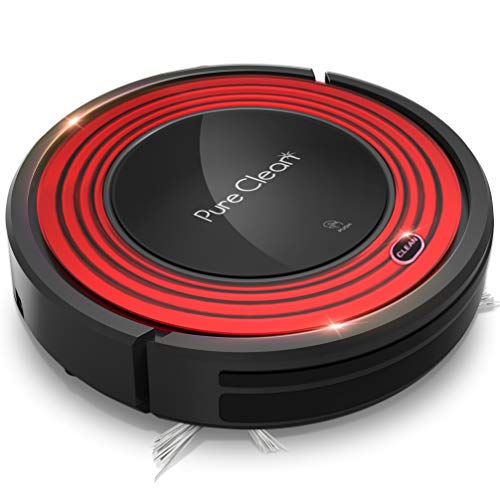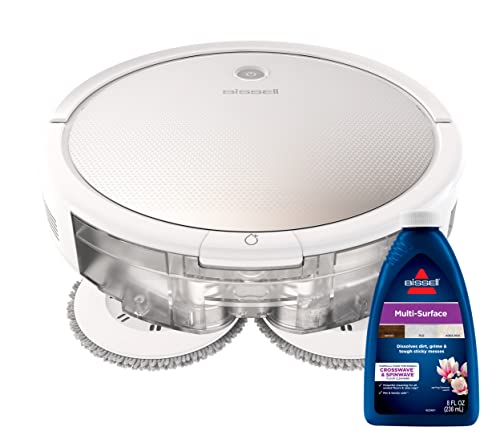 If you’re interested in a cleaner that doesn’t require hands to complete the job, you should consider this 2-in-1 robot. It is able to clean medium and low-pile carpets for floors, and its app allows you to create no-mop areas and to adjust cleaning modes and schedules.
If you’re interested in a cleaner that doesn’t require hands to complete the job, you should consider this 2-in-1 robot. It is able to clean medium and low-pile carpets for floors, and its app allows you to create no-mop areas and to adjust cleaning modes and schedules.
Find models that sense what type of flooring they’re on. take out their own water and dirt tanks and stay clear of obstacles such as socks, chargers for phones and pet hair. Also, discover how easy it is to install.
Self-Emptying
As the world gets busier and more chaotic People are always seeking ways to reduce their work load. Robot vacuums and mop are among the top tools on the market to aid in this. These machines can vacuum dirt, pet hair and crumbs, while simultaneously cleaning floors. You can even use a smartphone or voice assistant to control them using pre-programmed schedules as well as specific room designations.
Self-emptying models are a great time saver for both the user and the machine. You don’t need to empty the trash bin each time you clean. This will save you time and effort and ensures your robot can keep your home clean more often, and not have to be concerned about running out of room in the bin before it’s time for refills.
If you’re considering self-emptying ensure that the dust bin is large enough for your home size and cleaning frequency because it will fill up quickly if you decide to run it on a regular basis. You should also ensure that the system doesn’t overfill and cause obstructions that prevent the robot from emptying it fully.
The self-emptying function works by removing the dust bin that is inside the machine and putting it in an additional storage container- think of it as the bag that comes with a traditional vacuum cleaner — that can be emptied every two or three cycles. The robots are worth the extra expense because they come with this feature that is top-of-the-line.
To mop certain models automatically wash and dry their own soiled pads after every use. Others have docks that does the job for you and you just need to empty it once or twice a year.
If you’re looking for a single-function robot that does both look into this top-rated model from Roborock. The RockDock S7 MaxV Ultra is a mop and vacuum that includes a dock that takes charge of all maintenance. It’s not necessary to empty the tanks manually, and you can schedule the unit or start it using the on-device controls and voice assistants such as Alexa and Google Assistant. It is equipped with boundary strips that stop it from straying into other areas of your home even if you don’t wish it to.
Object Avoidance
The top robot vacuums have objects avoidance, which can help the device move through furniture legs and children’s toys. This is an essential feature for busy households with kids and pets, as if the robot bumps into these items they’ll likely jam or break it.
The technology is typically based around a single sensor or a pair of sensors that are situated near the bumpers that absorb shocks of the vacuum cleaner. If sensors detect a roadblock the robot will then reorient and turn until it finds an open path. Some models utilize lidar technology, which uses lasers to determine the distance between the robot and nearby objects. This allows the device to create a real-time map of its surroundings, and helps it move through your living space with more effectiveness.
Other robovacs which don’t employ lidar technology are built to utilize monocular or binocular vision to identify obstacles with cameras. These systems are effective in ideal lighting conditions, but they don’t work as well in low-light settings or with items with similar to their surroundings. A robot with monocular vision will have difficulty recognizing cables and shoes.
Some robot vacuums are more sophisticated than others, and they can perform more than just avoid obstacles. This is why they are also called smart vacuums. They can build a virtual map of your home’s layout, and allow you to direct them to specific rooms or areas through the app. They’ll also remember where they’ve already cleaned which will reduce the time spent cleaning and ensure your home is spotless.
A lot of the most modern robotic vacuums and mops change between floor types. Some will automatically register the type of flooring in a room and adjust their suction and brush functions to match. Some even allow switching from carpet to hard flooring without losing suction power.
All smart vacuums and mops must have some kind of obstacle avoidance, irrespective of the flooring type. These devices stop the vacuums from becoming caught in webs or wires that could cause them to lose their suction. Certain models are equipped with a list of common items that they know to look for, such as socks, shoes and pet waste. The most effective models can recognize these items and determine their size, distance and avoid them without getting into it.
Floor Mapping
Most robot vacuums have sensors that allow them to detect objects. If an object — like furniture legs or a randomly toy that is thrown around gets in the way it triggers a sensor that tells the vacuum to move away from the obstruction and to move towards a cleaner section of the floor. The sensors aren’t completely foolproof. The Roomba 900 Series, for instance, was able to avoid our headphones and shoeslaces however, it did accidentally take into the cable. We suggest removing objects away from the best budget robot vacuum with mop‘s path before letting it run through your home.
Many of the vacuums and mopping robots that we have tested in The Spruce include an app. It can be used to save maps, make schedules, select cleaning modes and monitor the performance of your robot. The most effective apps have features that improve the efficiency of your robot. They are easy to use and easy to use.
App integration lets you keep the track of the water tank and dirty pads on your robot. You should look for models that allow you to check the level of water in the tank, the amount of wetness on the pad and when the pad needs to be changed. You can set up a schedule that will automatically change the pad after it is wet to prevent mildewy odors from growing.
Mapping is a crucial feature for robot vacuums that operate across multiple floors of the home. It allows the robot to create an image of your house that it can use to move between rooms and clean various areas more thoroughly. Certain robots make use of sensors in combination with artificial intelligence to create these maps. For instance, iRobot’s Vacuuming Mapping uses multiple sensors to scan an area that includes walls and corners to determine how far the robot can travel before hitting furniture or bumping into obstacles.
Other robots such as the Ecovacs Deebot X1 -OMNI or the Roborock S7 MaxV Ultra use optical sensors to determine the wall’s location. They can then use a mapping algorithm or follow the edges of furniture to figure out the most efficient way to travel through each room.
Mopping Settings
best robot vacuum mop combo vacuums operate automatically and require nothing more than pressing a button on a remote or in an app to have them clean a room. You can also make use of voice commands to set schedules which is a great feature for busy families who want their robot cleaner to complete its tasks at the same time every day.
Most robot mops have microfibre pads that are soaked using water tanks in their base. They can be used several times before needing to clean or replace the pad. Models that allow for adjustment of the flow of water to fit different floorings are ideal. You should also consider the size of your tank, its ability to switch between wet and dried mopping, and the amount of time a robotic mop can last on a single charge.
The most effective robot mop mops are able to best sweep and mop robot floors quickly and efficiently, even under tables and around obstacles. Although they’re not perfect, they can struggle to climb stairs or maneuvering ledges between rooms. They can also leave behind streaks of wood and tiles particularly in bright sunlight.
A robot vacuum and mop of high-quality should also come with carpet sensors. This is a crucial feature to have if you have a variety of flooring in your home, as it means that the cleaner won’t be sucked up by or sucked into a rug. It should be able to recognize other objects that might hinder the cleaning process like cords and tassels. This will enable you to designate “no-go zones” that will prevent the robot from entering these areas.
 Most of the robot cleaners we test in the CHOICE lab come with a smart app integration that allows you to save maps of your home as well as schedule cleaning times and choose cleaning modes. You can also set up virtual barriers to keep your best robot Vacuum plus mop out of certain areas and receive (sometimes humorous) warnings of errors when the device is having issues. Certain apps are simpler to use than others, while others provide a live webcam for monitoring your robot.
Most of the robot cleaners we test in the CHOICE lab come with a smart app integration that allows you to save maps of your home as well as schedule cleaning times and choose cleaning modes. You can also set up virtual barriers to keep your best robot Vacuum plus mop out of certain areas and receive (sometimes humorous) warnings of errors when the device is having issues. Certain apps are simpler to use than others, while others provide a live webcam for monitoring your robot.
